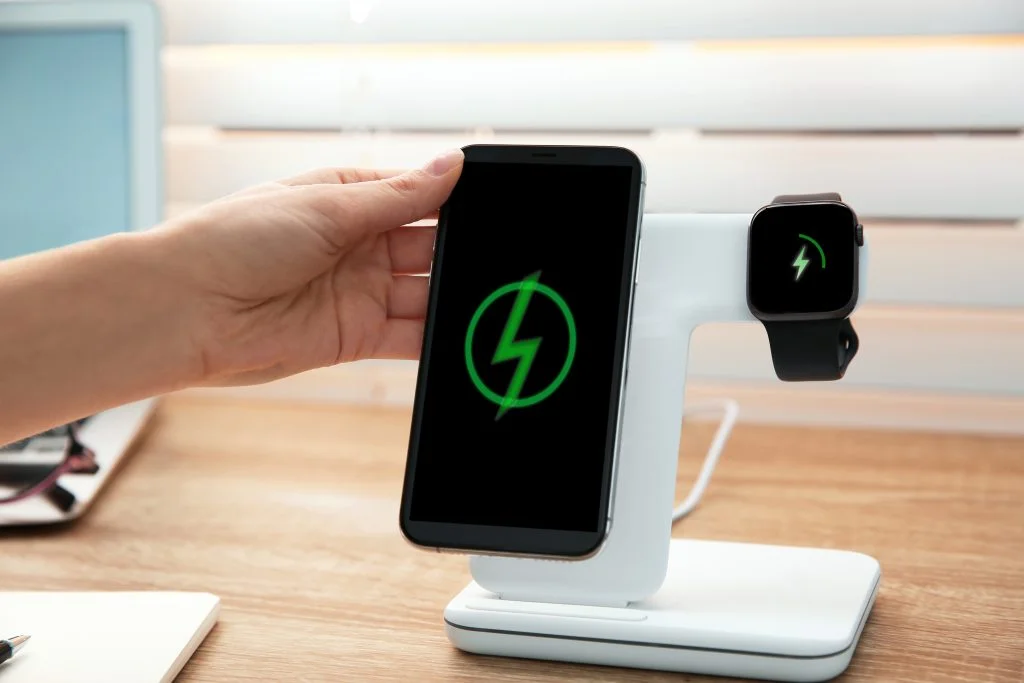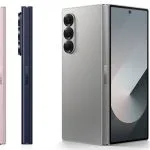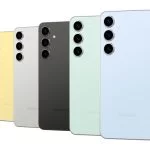Wireless chargers have revolutionized the way we power our devices. With no cords to worry about, just placing your phone on a charging pad or stand seems like the epitome of convenience. However, like all technology, wireless chargers are not immune to wear and tear. Over time, they can degrade, lose efficiency, or become incompatible with newer devices. Knowing when to replace your wireless charger can save you from frustration, inconvenience, and even potential damage to your devices.
In this article, we’ll explore the key signs that it’s time to change your wireless charger and how you can choose the best replacement to keep your devices running smoothly.
1. Slow Charging Times
One of the most common indicators that your wireless charger is failing is a noticeable increase in charging time. If it feels like your device takes much longer than usual to charge fully, this could be a red flag. Wireless chargers, like any electrical component, can lose efficiency over time. The power output may degrade, leading to slower charging speeds.
Why Does It Happen?

Wireless chargers use induction coils to transmit power to your device. Over time, these coils can wear out or become misaligned, reducing the amount of energy transferred. Additionally, cheap or low-quality chargers might degrade faster than premium ones.
What Can You Do?
If you notice slower charging times, try using your wireless charger with a different phone or device. If the issue persists, it’s a sign that your charger is the problem and not your device. Replacing the charger will restore faster charging speeds.
2. Overheating
Overheating is another common issue that can signal the need for a new wireless charger. While it’s normal for both your phone and the charger to get slightly warm during charging, excessive heat is not. If your device or charger feels too hot to touch, there’s likely something wrong.
Why Does It Happen?
Several factors can contribute to overheating in a wireless charger:
- Internal component failure: Faulty circuits or worn-out coils can cause the charger to work harder, generating more heat.
- Poor ventilation: If your charger is placed on a soft surface like a bed or couch, it may not get enough airflow, leading to overheating.
- Incompatibility: Older chargers might not be able to handle the power requirements of newer devices, causing them to overheat.
What Can You Do?
Move your charger to a flat, hard surface with good ventilation to see if the problem persists. If overheating continues, it’s time to replace your charger to prevent any damage to your device.
3. Intermittent Charging
Does your phone constantly stop and start charging when placed on your wireless charger? If so, you’re likely dealing with intermittent charging. This can be a frustrating experience, as it can prevent your device from charging efficiently.
Why Does It Happen?
Intermittent charging can be caused by several issues:
- Coil misalignment: Wireless chargers use induction coils that must be aligned properly with the coils in your phone. Over time, these coils may become damaged or misaligned, leading to charging issues.
- Wear and tear: Daily use, drops, or physical damage to the charger can cause its internal components to break down.
- Loose connections: If the charging pad or stand has a loose internal connection, it may result in an unstable power flow.
What Can You Do?
First, make sure your phone is placed correctly on the charger, as incorrect positioning can also cause intermittent charging. If that doesn’t fix the issue, try another phone or device. If multiple devices experience the same problem, it’s time to change your wireless charger.
4. Physical Damage
Visible damage to your wireless charger is one of the most obvious signs that it’s time for a replacement. Cracked charging pads, exposed wires, or discoloured areas are strong indicators that your charger is no longer safe or effective.
Why Does It Happen?
Daily use, accidental drops, or even exposure to liquids can damage your wireless charger. Over time, this damage can affect the internal circuitry, reducing the charger’s efficiency or causing it to fail altogether.
What Can You Do?
If your charger shows any signs of physical damage, stop using it immediately. A damaged charger could short-circuit or pose a fire hazard. Replace it with a new one as soon as possible to ensure your device is charging safely.
5. Charging Stops at a Certain Percentage
If you notice that your phone consistently stops charging at a certain percentage—say, 80% or 90%—your wireless charger might be at fault. While this issue can occasionally be related to phone settings (like optimized battery charging features), it can also indicate a problem with the charger.
Why Does It Happen?
Wireless chargers use electromagnetic fields to transfer energy, but if these fields are weakened or disrupted, the charger may not be able to provide enough power to complete a full charge. Additionally, faulty circuits or components within the charger can limit its power output.
What Can You Do?
First, check your phone’s battery settings to ensure there isn’t a power-saving mode or feature that’s limiting the charge. If everything seems fine and the issue persists, try using a different charger. If your phone charges fully with another charger, it’s a clear sign that your old wireless charger needs replacing.
6. Noise While Charging
A good wireless charger should be virtually silent. If you start hearing buzzing, clicking, or other unusual noises while charging, this is a strong indicator of a problem. Any noise during charging could mean that the charger’s internal components are failing or that it’s struggling to function properly.
Why Does It Happen?
Noise can be caused by a failing fan in chargers that have built-in cooling systems, or by malfunctioning coils or circuits. It’s also possible that the charger is incompatible with your phone, and the power transfer process is being disrupted.
What Can You Do?
If your wireless charger is making noise, it’s best to stop using it immediately. The sound may indicate a serious internal issue that could lead to further damage or even pose safety risks. Replace it with a new charger.
7. Lack of Compatibility with New Devices
As smartphone technology evolves, so do charging standards. If you’ve upgraded to a new phone and your old wireless charger is no longer performing as it should, this could be a sign that your charger isn’t fully compatible with your new device.
Why Does It Happen?
Older wireless chargers may not support the latest fast-charging technologies or power outputs required by newer phones. For example, if you upgrade to a phone that supports 15W or 25W wireless charging, but your charger only outputs 5W, your phone won’t charge as quickly as it could.
What Can You Do?
If you’ve recently upgraded your phone, check the manufacturer’s specifications to ensure your wireless charger supports the same charging standards. If not, it’s time to upgrade to a new charger that can keep up with your device’s power needs.
8. The Charger Doesn’t Work with a Case
Modern wireless chargers are generally designed to work through thin phone cases. However, if you find that your charger struggles to charge your phone when it’s in a case, especially one it previously worked with, this could be a sign of declining performance.

Why Does It Happen?
The effectiveness of wireless charging can be affected by interference between the phone and the charger. If your charger was once capable of charging through your case and suddenly isn’t, the charger’s electromagnetic field may have weakened, reducing its charging range.
What Can You Do?
Try removing your phone case and see if the charger works without it. If charging only works without the case, your charger may have lost some of its power transmission capabilities, signalling that it’s time for a replacement.
How to Choose a New Wireless Charger
If you’ve determined that your wireless charger needs replacing, it’s important to choose a new one that suits your needs and keeps your device safe. Here are some factors to consider:

1. Power Output
Make sure the charger supports the power output required by your phone. Most newer smartphones support fast wireless charging at 10W, 15W, or even higher. Check your phone’s specifications and choose a charger that matches or exceeds this power output.
2. Compatibility
Ensure the charger is compatible with your phone model. While most wireless chargers use the Qi standard (which is universal), some may have limitations in terms of wattage or charging speed. If you have a newer device, it’s essential to choose a charger that can handle its requirements.
3. Design and Form Factor
Wireless chargers come in various forms—pads, stands, or even multi-device chargers. Choose a design that suits your charging habits. For example, stands are great for propping up your phone while you use it, while pads offer a more minimalist look.
4. Safety Features
Look for chargers with built-in safety features like overcharge protection, short-circuit protection and temperature control. These features ensure that your phone and charger won’t be damaged during the charging process.
FAQs
1. How long should a wireless charger last?
A good-quality wireless charger can last anywhere from 2 to 5 years, depending on usage and care. Regular use and physical wear can shorten its lifespan, but with proper care, it can function for years.
2. Can I use any wireless charger with my phone?
Most wireless chargers use the Qi standard, which is universal. However, not all chargers support the same charging speeds. It’s best to choose a charger that matches your phone’s power output requirements for optimal performance.
Arthur is a senior member of the communications team who has worked at several well-known companies over the past 10 years. As a writer with many years of experience in the technology sector, focusing on reviewing mobile phones and accessories, he has written about many products or has been hands-on with them at some point




